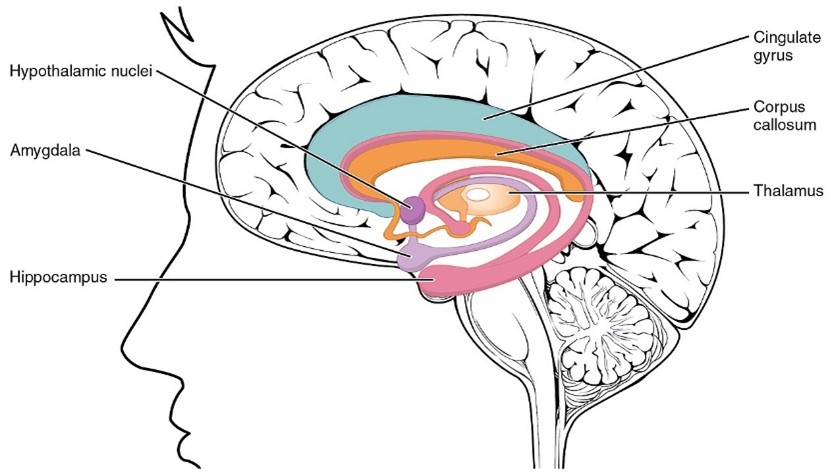How to Sleep Better at Night Naturally
Aug 16, 2021Sleep research is advancing by leaps and bounds. The most exciting information to me is understanding what is happening in the brain during the various sleep stages. Understanding the biology of sleep gives us more power to improve sleep through self-management. You may be thinking...why not a drug? Wouldn’t that be easier?
What Is Bad About Sleeping Pills?
Although some drugs induce sleep, few, if any, improve sleep quality. And all have side effects, some of which are serious. All sleep drugs increase the risk of falls and car accidents the day after use due to the lingering sedating effects of the drug in the body. In addition, there is a new concern that sleep medications, especially the benzodiazepines (like Xanax®, Ativan® and others) and possibly the Z-drugs like zopiclone (Imovane® & Zimovane®) and zolpidem (Sublinox® & Ambien®), increase the risk of dementia when used over time. I first talked about his problem in my blog on the Risks of Sleep Medications in 2014. Here is an update.
Research on dementia risk is difficult to conduct. For ethical reasons, one can’t purposely give a drug to participants that may have adverse effects in order to study what happens. So, the studies on sleep medication are, by necessity, observational—seeing whether people who are using the sleep drugs are more likely to develop dementia than those who are not. Here are some conclusions from a review of 11 studies. Note that with observational studies, one can’t prove causality.
What Are the Side Effects of Taking Sleeping Pills Every Night?
- Benzodiazepine use (for more than three months) is associated with increased rates of dementia.
- The risk may be higher with higher daily doses.
- The risk is higher with drugs that stay in the body longer (longer half-life).
- The risk is higher in current users than past users, suggesting that getting off sleep drugs may lower risk.
- The increased risk may be about 50%.
The Science of Sleep—Natural Ways to Induce Sleep
Because of these risks, my education materials, including Session 2: Sleep from my manual Let Your Light Shine Through (LYLST), Chapter 4: Sleep from my eBook More Light and Pathway 3: Sleep from my online course Pathways to Improvement, all emphasize non-drug strategies to improve sleep. These strategies are safer and the effects are long-lasting.
Session 2: Sleep in my manual, Let Your Light Shine Through published in 2012, provides useful background information on
- Normal sleep physiology,
- Sleep abnormalities associated with ME/CFS and FM,
- How to identify and eliminate factors that interfere with sleep,
- How to improve sleep hygiene and sleep environment,
- Natural sleep remedies and sleep medications, including names, uses and doses.
In my online publication, More Light, Chapter 4: Sleep, I provide an update with new information on what happens in the brain during sleep. The new topics include the following:
- Sleep drive
- Circadian rhythm (body clock)
- Deep sleep
- REM sleep
- Health effects of insufficient sleep
Importance of Sleep—Sleep Is Critical for New Learning
One of my favourite bits of new learning is the interplay between neuroplasticity—the brain’s ability to change over time—and sleep. When we engage in learning during the day, the facts and skills we acquire are temporarily stored in the hippocampus. The hippocampi are small, curved structures deep in the temporal lobes inside the area of the ears (see Figure 3-1 below). Like many brain structures, there are two hippocampi, one on each side. Each night, during deep non-REM sleep, the new information of the day is moved from the hippocampus to permanent storage in the cortex. The hippocampi are then emptied of information to be ready for new learning the next day. The take-home message is that to learn new information, we have to engage in new experiences, and we need good sleep the night before and the night after the learning.

Figure 3-1. Brain Nuclei
By OpenStax College – Anatomy & Physiology, Connexions Website, June 19, 2013. https://commons.wikimedia.org/w/index.php?curid=30148029
Cannabis as a Sleep Aid: Here's What You Need to Know
 Many people with ME/CFS, FM and ES are trying cannabis products to assist with sleep. There are naturally occurring cannabinoids, including tetrahydrocannabinol (THC) and cannabidiol (CBD) and a number of synthetic pharma-produced cannabinoids such as Nabiximol (Sativex®), Dronabinol (Marinol®) and nabilone (Cesamet®). Now that naturally occurring cannabinoids are legally accessible in most countries, sales of synthetic products have plummeted. People clearly prefer natural cannabis products.
Many people with ME/CFS, FM and ES are trying cannabis products to assist with sleep. There are naturally occurring cannabinoids, including tetrahydrocannabinol (THC) and cannabidiol (CBD) and a number of synthetic pharma-produced cannabinoids such as Nabiximol (Sativex®), Dronabinol (Marinol®) and nabilone (Cesamet®). Now that naturally occurring cannabinoids are legally accessible in most countries, sales of synthetic products have plummeted. People clearly prefer natural cannabis products.
An extensive review of the health effects of cannabis and cannabinoids by the National Academy of Medicine in the U.S. concludes that there is moderate evidence that cannabinoids improve sleep quality and daytime refreshment in people with Fibromyalgia and chronic pain. However, the research is hampered by the lack of comparison of different strains and cannabis molecules. Furthermore, the same cannabinoid molecule can have different effects if inhaled by vapour versus being taken by mouth.
It is important to be aware that, although naturally occurring, cannabis has side effects. Some side effects, like getting high or getting the munchies, are not too serious. Some are more problematic. Tolerance develops to the sleep effects of cannabis. This means that when people discontinue cannabis, they often experience insomnia for a period of time. This can make it hard for people to discontinue use when they wish.
Potentially serious side effects of cannabis include the following:
- Motor vehicle accidents while impaired
- Impaired learning, memory and attention after use
- Development or worsening of schizophrenia or bipolar disorder, especially in younger individuals who are heavy users
- Cannabis dependence
- Development of other substance use disorders (e.g., alcohol and illicit drugs)
- Impact on insurance and benefits coverage
Cognitive Behavior Therapy for Insomnia (CBT-I)
Given all of the risks of using drugs and naturally occurring substances, it is fortunate that there are alternatives. CBT-I is a first-line treatment for insomnia. In the short term, CBT-I is equally effective as medication. However, over the long term, it is superior. Whereas the body tends to develop tolerance to medication, making them less effective, CBT-I continues to increase in effectiveness as long as you practice the strategies nightly. This is due to neuroplasticity. CBT-I helps you retrain your brain to fall asleep more quickly and have fewer awakenings. It can also guide you to be less anxious about sleep, which in turn helps your body sleep more easily.
How to Sleep Better—Tools and Research From a Medical Professional
Sleep is one of the most difficult aspects of ME/CFS, FM and ES to improve, and the sleep pathway is one of the best-attended classes in my Pathways to Improvement online course. To make the information available to more people, I have created a single-session self-study version of Pathway 3: Sleep. This single session includes
2 Free Chapters
- Session 2: Sleep from Let Your Light Shine Through
- Chapter 4: Sleep from my eBook More Light
10 instructional video recordings, including
- How to chart your sleep (Wearable trackers make this much easier.)
- CBT-I Part 1: Reversing unconscious conditioning and sleep restriction
- CBT-I Part 2: Calming the body and mind and myth-busting
- Sleep medications, including melatonin, cannabis and the risks of sleep aids
- Shifting your circadian rhythm (body clock).
- Bonus video of frequently asked questions
Go to Single Session Pathway 3: Sleep for more information
Author: Eleanor (Ellie) Stein, MD, FRCP(C)
I am a psychiatrist with a small private practice in Calgary and am an assistant clinical professor in the faculty of medicine at the University of Calgary. Since 2000, I have worked with over 1000 patients, all with ME/CFS, FM and ES. My passion for this field comes from my own struggle with these diseases, my desire to improve my health and then pass on what I learn. My goal is for every patient in Canada to have access to respectful, effective health care within the publicly funded system.
Are you ready to take the next step?
Sleep better with the Pathways to Improvement: Pathways 3: Sleep course.


